
|
|
|||||||
10 poster tuyên truyền tiêu biểu thời Chiến tranh lạnhthis thread has 10 replies and has been viewed 9619 times
|

 |
|
|
Ðiều Chỉnh | Xếp Bài |
|
|
#1 |
|
[Đăng nhập để xem liên kết. ]
1. Superman [Roman Cieslewicz, 1968] This poster, which appears on the front cover of David Crowley’s “Posters of the Cold War” book, depicts the USA and USSR, side-by-side, as identical Superman characters. It implies that each nation is simply a mirror image of the other and that both are equally harmful and destructive. Cieslewicz uses the Superman character as a symbol of masculinity, machismo and the ridiculousness of the Cold War in general.  -------------------------------------------------------- Thích cái này nhất!
__________________
tặng nhau nhé tim nghe hồn nhiên |
|
|
|

|
|
|
#2 |
|
2. Jo-Jo The Dove [Unknown, 1951]
French anti-communist group, Paix et Liberté, created this poster, which openly mocks Stalin’s advocacy of peaceful values. Stalin is depicted as a peace protestor with sinister motives, holding a “Peace” sign in one hand and a bommy-knocker in the other. 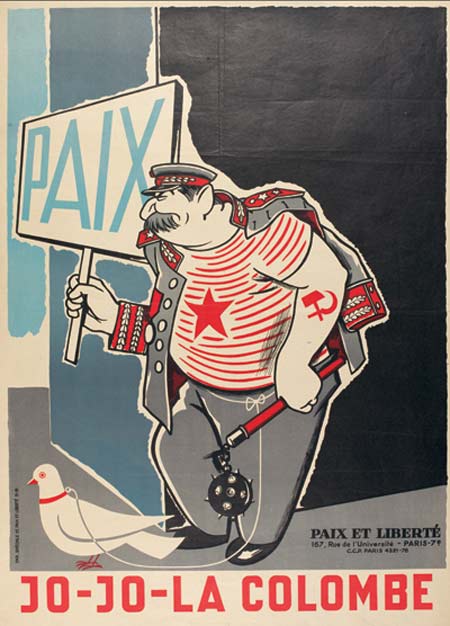
__________________
tặng nhau nhé tim nghe hồn nhiên |
|
|
|

|
|
|
#3 |
|
3. Don’t Brag About Your Job [Reginald Mount & Eileen Evans, 1960]
This British poster was displayed in government and military offices throughout the country. Although it carries no explicit anti-communist message, we can safely assume, given that it was published in 1960, that it warns against the presence of Soviet spies. 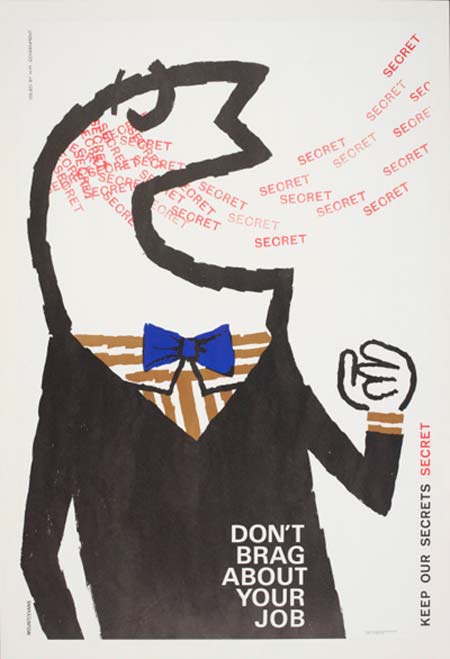
__________________
tặng nhau nhé tim nghe hồn nhiên |
|
|
|

|
| Đã có thành viên gửi lời cám ơn đến DeMen vì bạn đã đăng bài: |
Stevvinhith (15-09-2015)
|
|
|
#4 |
|
4. Lenin [V. Briskin, 1970]
The Soviet Union was keen to promote a positive image of itself throughout the early 1970s against a backdrop of the Vietnam War and a highly volatile relationship with the USA. Posters such as this helped to keep Lenin’s political ideologies alive. With no slogans or foreign words whatsoever, this poster was clearly designed for a European and American audience.  5. To Fly Higher Than All, Farther Than All, Faster Than All [D. Pjatkin, 1954] Published one year after Stalin’s death, this poster reinforces the message that Soviet research and development of weapons and machinery is ongoing. Substantially funded by war reparations from Germany, the Soviets were able to build the MiG-9 Fargo turbo fighter in 1946 and the Yak-15 Feather attack aircraft in 1947. The red stars in the image above symbolise the pilot’s kill score. 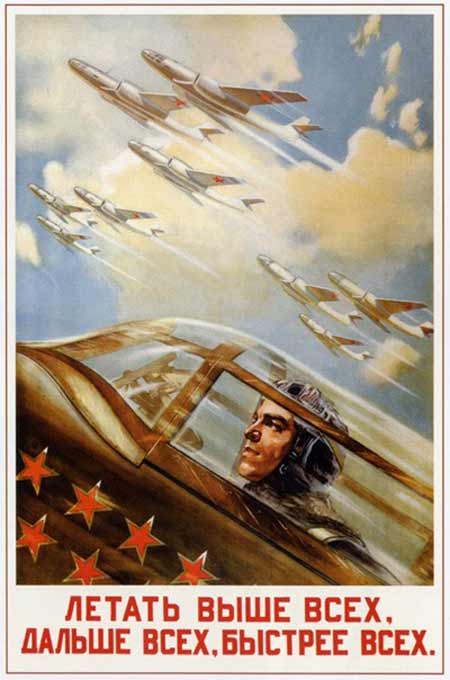 6. If You Want To Be Like Me- Just Train! [V. Koretskiy, 1951] The Soviet Union wanted strong citizens who could work for the benefit of the Motherland. The BGTO training programme was introduced in 1931 and included gymnastics, sprint and long distance running, long and high jumps, discus, javelin, swimming, cross-country skiing and sharp shooting. The boy in the poster above is carrying a book of BGTO standards. 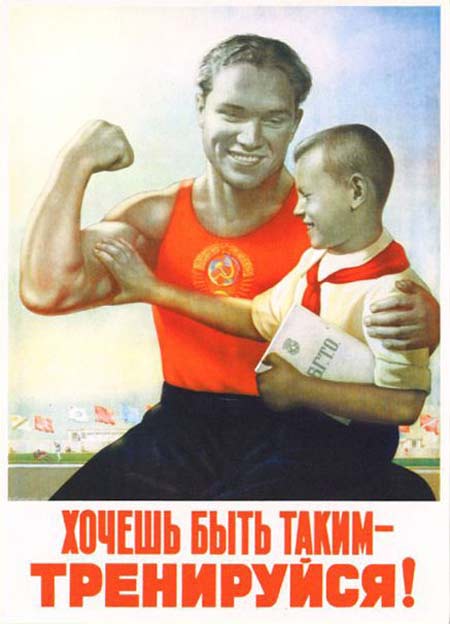 7. A Mighty Sports Power [B. Reshetnikov, 1962] By 1962, sporting events such as the Olympic Games had become hotly contested between the Soviet Union and the USA. Each was desperate to win in order to demonstrate their power and dominance over the other. In the 1956 and 1960 Olympic Games, the Soviet Union was victorious. The character in this poster has been painted to resemble an Olympic torch, with gold medals in the background. 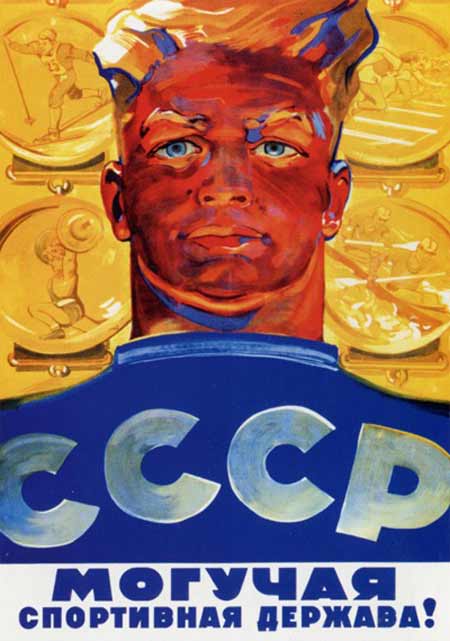
__________________
tặng nhau nhé tim nghe hồn nhiên |
|
|
|

|
|
|
#5 |
|
8. Same Year Different Weather [Unknown, Year Unknown]
As dark clouds loom over the USA, the USSR bathes in glorious sunshine. The black thermometer shows the “American Industry Rate” pitched well below the “Soviet Industry Rate”, which is displayed on the red thermometer. The information box at the bottom tells of an American economic crisis. 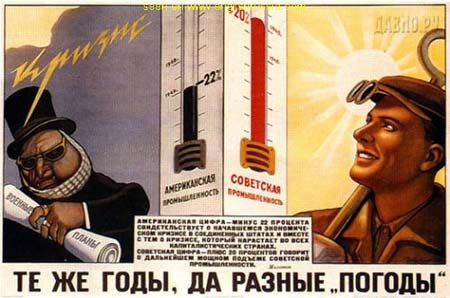 9. Stop Communism! [Unknown, Year Unknown] Rightly or wrongly, the West perceived nationalist movements in many countries and regions around the world to be allied with communist groups and supported by the Soviet Union. The most notable of such movements appeared in Guatemala, Iran, the Philippines and Indochina. This poster shows a Soviet-backed, machete-armed aggressor trying to exert influence in the Philippines. 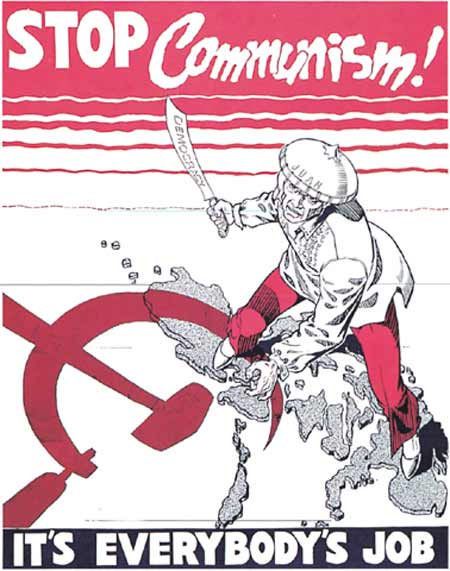 10. People and the Party Are Undivided [M. V. Luk'janov and V.S. Karakashev, 1978] In this poster, banners carried by marching Soviet citizens create a somewhat subtle image of Lenin’s face. The caption reads “People and the party are undivided.” This famous Soviet slogan first appeared in Pravda, the leading newspaper of the Soviet Union, on 8 March 1953, just three days after Stalin’s death. 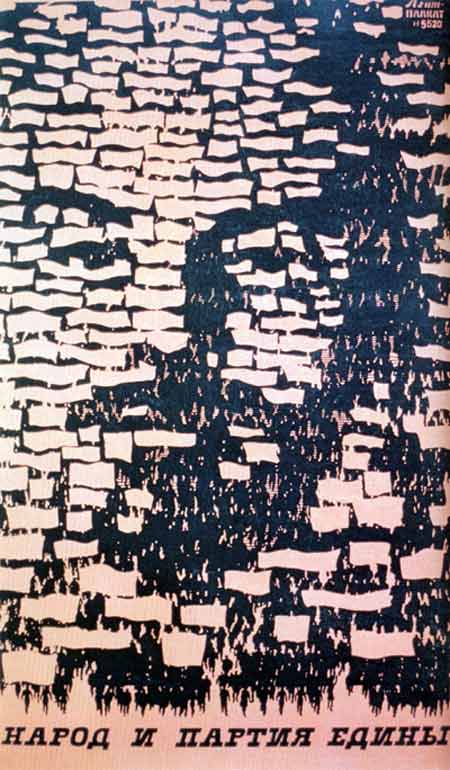
__________________
tặng nhau nhé tim nghe hồn nhiên |
|
|
|

|
|
|
#6 | |
|
Trích:
__________________
tặng nhau nhé tim nghe hồn nhiên |
||
|
|

|
|
|
#7 |
|
Lâu quá ko gặp, nhớ tui hok ???
|
|
|
|

|
| Đã có thành viên gửi lời cám ơn đến khucbanchieu vì bạn đã đăng bài: |
Stevvinhith (15-09-2015)
|
|
|
#8 |
|
mình thì nhìn ra gương mặt Lê Nin
__________________
Còn gặp nhau thì hãy cứ vui Cuộc đời như nước chảy hoa trôi Lợi danh như bóng mây chìm nổi Chỉ có tình thương mãi để đời. YM: thang12a1 site: http://buiquocthang.vn.googlepages.com |
|
|
|

|
| Đã có thành viên gửi lời cám ơn đến magicboy vì bạn đã đăng bài: |
khucbanchieu (31-08-2009)
|
|
|
#9 |
|
em cũng nhìn ra rồi, với sự trợ giúp của anh tuekhung, hix
__________________
tặng nhau nhé tim nghe hồn nhiên |
|
|
|

|
|
|
#10 |
|
Hình như N nghe nói sắp lấy chồng hả Mèn!!!!
  |
|
|
|

|
| Đã có thành viên gửi lời cám ơn đến khucbanchieu vì bạn đã đăng bài: |
Stevvinhith (15-09-2015)
|
 |
«
Ðề Tài Trước
|
Ðề Tài Kế
»
|
|
 Chủ đề tương tự
Chủ đề tương tự
|
||||
| Ðề tài | Người Gởi | Chuyên mục | Trả lời | Bài mới gởi |
| Chiến tranh thế giới nổ ra vào 11/2010? | CafeNet | ..:: Điểm tin ::.. | 3 | 17-06-2009 05:38 PM |
| Chiến tranh thế giới thứ 3 vào năm 2010? | DeMen | Góc "Tám" | 6 | 16-04-2009 07:34 PM |
| Muốn con thông minh, cha mẹ phải sáng tạo trong trò chơi | nhk | Chuyện trẻ thơ | 0 | 16-04-2009 12:44 PM |
| Nếu còn có ngày mai - Sidney Sheldon | cobemongmo | ..:: CLB Văn Thơ ::.. | 27 | 29-08-2006 01:59 PM |






 Linear Mode
Linear Mode



